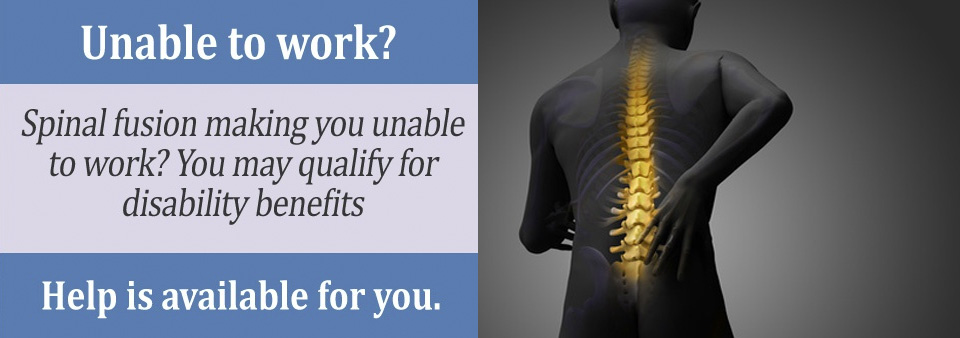A residual functional capacity (RFC) is a detailed form that explains what you can and cannot do. The RFC paints a clear picture of your functionality, such as how long you can stand, how far you can walk, how much you can lift, if you can bend or squat, and your ability to reach.
It will allow the disability examiner to determine what you can and cannot do then match your abilities with a job. It details your physical and your mental restraints and abilities. If you cannot meet the criteria of a listing with your spinal fusion in the Blue Book, you may qualify for Social Security Disability using an RFC.
How To Use The RFC When You Have Spinal Fusion
A spinal fusion is a surgical procedure that is used to help repair damage or injuries to the back. However, a surgical procedure could go wrong and there are always risks. The procedure doesn’t always fix the problem, and it can lead to infection, degeneration, spinal instability, and damage to the spinal nerve.
Sometimes the patient shows very little – or no – improvement after the surgery, and at times, the procedure leaves the patient in even worse condition. If you are unable to work after a spinal fusion, but you cannot meet the criteria of the Blue Book listing, you may qualify using an RFC.
The RFC will indicate how long you can stand, how frequently you must reposition, and if you can walk unassisted and if so, how far you can walk without resting. It will detail your ability to reach, carry, bend, and squat. Also, the pain and painkillers can affect you mentally, so that will also be noted, including your ability to remember, concentrate, any mood swings, depression, and any drowsiness or dizziness and your ability to operate equipment or machinery.
As an example, you are 60 years old and you have worked as a warehouse worker since you were 18. That job involves frequent bending, lifting more than 30 pounds, reaching above your head, standing, and walking. The RFC should indicate how the spinal fusion limits those abilities and how you are no longer able to perform those duties. It should show the disability examiner what you can and cannot do, and if you can perform any kind of work at all.

What To Include With Your RFC For Spinal Fusion
When you send in the RFC completed by your treating physician, you should also send in other supporting documentation. This will include exam notes, surgical notes, scan and imaging results, and any other pertinent medical records.
You should include records from any medical professional who has treated you for your spinal condition and your spinal fusion. This will include your orthopedic physician, your surgeon, any neurologist or neurosurgeon, and your primary care provider.
Also, you will need to provide other supporting documents that are dependent on whether you are applying for Social Security Disability Insurance (SSDI) or Supplemental Security Income (SSI). To qualify for SSDI, you will need to prove that you have enough work credits to be covered. You will need to provide a detailed work history for the last 10 years. SSI is needs-based and specific financial criteria must be met, so you will need to provide proof of income and proof of any resources, such as property deeds, bank statements, vehicle titles, investment account statements, and so forth.
Get Help With Your RFC For A Spinal Fusion
If you are represented by an attorney, you may be more likely to have a successful disability claim with spinal fusion. Disability lawyers receive payment on a contingency basis, which means that your Social Security disability lawyer will not be paid until your claim is approved. Complete the Free Case Evaluation Form.
Additional Resources
- Tips on Qualifying For Disability Benefits With a Spinal Condition
- Permanent Restrictions After A Spinal Fusion
- How To Get Disability for Spinal Fusion (Updated for 2023)
- Medical Criteria Needed to Qualify with Spinal Fusion
- Spinal Fusion and Social Security Disability
- 5 Signs Your Claim for Disability Benefits May Be Approved After a Spinal Fusion